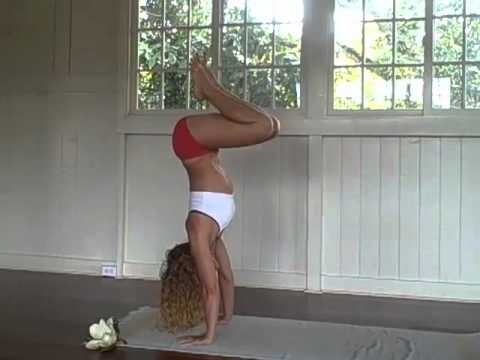In Yoga handstands make up one area that a lot of people avoid, because they can be much more difficult then any number of the other poses. But they should not be avoided. While it may take lots of practice you can learn how to do the handstand and other inverted poses.
It’s important to note that the handstand has been called the king of poses because of the benefits it brings. It strengthens the whole body, requires tremendous coordination, and it is an inversion which brings plenty of its own benefits.
Yoga Handstands
While not the best demonstation in the world, this video shows you what practicing handstands in yoga may look like (if you happen to be a very attractive female).
The handstand is not the first inversion or handbalancing pose you should work on. Far from it. There are a number of other poses that will build up your ability.
Pincha Mayurasana (Feathered Peacock Pose or commonly called the Forearm Stand)
Salamba Sirsasana (Supported Headstand)
Salamba Sarvangasana (Supported Shoulderstand)
Bakasana (Crane Pose)
Parsva Bakasana (Side Crane Pose)
Mayurasana (Peacock Pose)
Tolasana (Scale Pose)
And of course the handstand itself which is called Adho Mukha Vrksasana.
This is just like I teach in the Secrets of the Handstand System, and in fact some of the poses or drills are the same. If you want a step-by-step system to achieving the handstand check it out. Although its not geared toward yoga it will work just the same.
There are a number of variations of the handstand that can be done like the scorpion pose below, which adds extreme back flexibility into the mix. (Also note that the balance will actually be easier here then a straight bodied handstand as the center of gravity is lower.)
Scorpion Pose
So by working with the easier poses you’ll build up your balancing ability and control you need to hold the handstand. Once you’re there you can begin to go even further with your yoga handstands.

